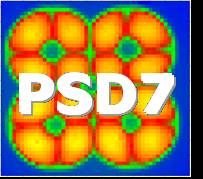Speaker
Prof.
Amos Breskin
(The Weizmann Institue of Science)
Description
The thick GEM-like (THGEM) electrode is a rather new gas-avalanche
electron multiplier, economically produced by standard printed
circuit board (PCB) drilling and etching techniques. Its structure
is similar to that of standard GEM, but its dimensions are expanded,
with thickness varying from 0.4 to 3.2 mm and the mechanically-
drilled hole diameter varying from 0.3 to 1mm. The Cu layer around
the drilled hole is further etched by 0.1mm at its rim. The
operation principle of the THGEM is similar to that of the standard
GEM, though the operation voltages and the charge transport
parameters (e.g. diffusion) do not scale with the dimensions. The
hole dimensions are large with respect to the electron's mean-free-
path and diffusion, which results in very high electron
multiplication within the holes and very efficient electron
transport into and out of the holes, permitting an efficient
cascading of several multipliers. Gains of 105 and 107 were recorded
in single- and double-THGEM structures respectively, in various
gases including highly scintillating ones such as CF4. Furthermore,
the THGEM can operate at very low gas pressures; e.g. gains of 105
and 107 were recorded in 1 and 10 Torr of isobutane, respectively.
The avalanche process is fast, with the pulse rise-time in the few-
ns range at all pressures investigated, and with a counting rate
capability in the range of 1MHz/mm2 at gains above 104. All these
properties make the THGEM an attractive solution for efficient
radiation detection and imaging, from single electrons to heavily
ionizing particles, over very large active area, with resolution in
the sub-mm range.
We have investigated the multiplier's performance using THGEM
elements of different geometries, at atmospheric and at low gas
pressures, down to a fraction of a Torr. In particular we have
studied the electron transport, which is very important for single-
electron detection applications, e.g. photon counting with gaseous
photomultipliers. We present the results of this study, discuss the
role of various geometrical and operational parameters and
demonstrate conditions for reaching full single-photoelectron
detection efficiency.
We present an imaging-detector prototype of 10x10 cm2, comprising a
double- THGEM cascaded multiplier coupled through a resistive anode
to a 2D readout electrode; the detector performance, studied with
various radiation sources, is discussed, and possible applications
are illustrated.
Primary author
Dr
Rachel Chechik
(The Weizmann Institute of Science, Israel)
Co-author
Prof.
Amos Breskin
(The Weizmann Institue of Science)




